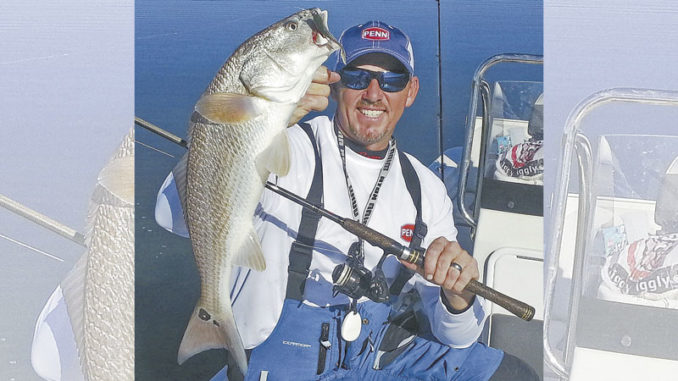
Backwater reds keep January anglers in plenty of action
Finding backwater reds from Emerald Isle south almost to Cape Fear depends upon weather conditions the previous two months.
“Cold-water fishing for reds behind (barrier islands) is affected by the preceding November and December,” said guide Jeff Cronk of Swansboro. “The majority of red drum follow baitfish to the surf zone those months because of northeast winds.
“As winter weather begins, you can see schools of several hundred to several thousand in the surf. But they don’t stay there.
“When the weather gets really cold in January, the reds move back inside. They follow baitfish — small menhaden, glass minnows and mullet minnows. You can’t find any reds at the beaches. But they do stay close to the surf zone.”
Before frigid weather fronts hit in January, December usually is more moderate, ideal to push huge schools into the surf zones along beaches, but they disappear when baitfish skedaddle after temperatures drop below 40 degrees.
“It’s shallower in the bays. So if (water temperature) moderates, it pushes them onto flats in the bays,” said Cronk, of FishN4Life Charters (336-558-5697). “Reds go there to find bait in creeks behind the beaches. Places with muddy bottoms draw reds, especially near oyster beds (with) little crabs and mud minnows.”
Use scented lures for best results
Overnight temperatures may bottom out, but redfish will become active on sunny afternoons in creeks and marshes behind barrier islands.
“They might be slow to bite in the morning, but let the sun hit (the water), and they’ll turn on,” said Cronk. He favors scented lures for reds that range from 18 to 31 inches long.
“I’ll use 1/16-ounce (jigheads) or Zoom Super Flukes with a weightless worm hook,” he said. “I also like 3-inch Gulp split-tail minnows. I want lures to fall slowly.”
Cronk avoids splashy summer lures that may spook fish in 1 to 2 feet of gin-clear water. Better yet, clear water makes sight fishing possible.
“If I know a school is in a bay, I might anchor up and wait for them to come by, and cast in front of them after they pass my boat,” Cronk said. “I cast when the entire school’s moving away. If I can see them, they can see me.”
That’s also an excellent chance to “dead stick” lures.
“I drop a scented lure 10 to 15 feet in front of a school, then barely twitch it,” he said.
Click here to read more articles about inshore fishing across the Carolinas.





Be the first to comment